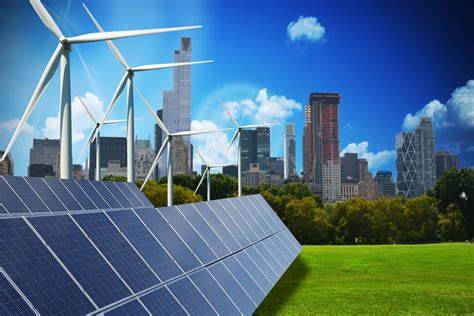Renewable energy technology represents a pivotal shift towards sustainable and environmentally friendly energy sources, offering promising solutions to mitigate climate change and reduce dependence on fossil fuels. With advancements in solar, wind, hydroelectric, geothermal, and biomass energy, renewable energy has emerged as a viable alternative to traditional forms of energy generation. In this article, we’ll explore the development and applications of renewable energy technology:
- Solar Energy: Solar energy, derived from the sun’s radiation, is one of the most abundant and accessible sources of renewable energy. Photovoltaic (PV) solar panels convert sunlight into electricity, while solar thermal systems harness solar energy for heating and cooling applications. Solar energy can be deployed at various scales, from rooftop solar panels on residential buildings to large-scale solar farms and utility-scale power plants. The declining cost of solar panels, coupled with technological advancements in efficiency and storage, has made solar energy increasingly competitive and attractive for residential, commercial, and utility-scale applications.
- Wind Energy: Wind energy harnesses the kinetic energy of wind to generate electricity through wind turbines. Onshore wind farms and offshore wind installations capture wind energy and convert it into electricity, providing a clean and renewable source of power. Wind energy has seen significant growth in recent years, driven by advances in turbine technology, economies of scale, and favorable government policies. Wind power is a cost-effective and sustainable solution for meeting electricity demand, especially in regions with abundant wind resources and favorable wind conditions.
- Hydroelectric Power: Hydroelectric power, generated from the gravitational force of flowing water, is one of the oldest and most widely used forms of renewable energy. Hydroelectric dams and run-of-river systems capture the energy of flowing water and convert it into electricity through turbines and generators. Hydroelectric power plants can vary in size and capacity, from small-scale micro-hydro systems to large-scale dam projects. Hydroelectric power provides reliable and dispatchable energy, serving as a cornerstone of many countries’ electricity grids and supporting grid stability and resilience.
- Geothermal Energy: Geothermal energy harnesses the heat stored beneath the Earth’s surface to generate electricity and provide heating and cooling for buildings. Geothermal power plants extract heat from underground reservoirs of hot water or steam and convert it into electricity through turbines and generators. Geothermal heat pumps utilize the relatively constant temperature of the Earth’s subsurface to provide efficient heating and cooling for residential and commercial buildings. Geothermal energy is a clean, reliable, and sustainable source of power, particularly in regions with high geothermal potential and tectonic activity.
- Biomass Energy: Biomass energy derives from organic materials such as wood, agricultural residues, and organic waste, which are converted into heat, electricity, or biofuels through combustion, fermentation, or chemical processes. Biomass power plants and biorefineries utilize biomass feedstocks to produce heat, electricity, biofuels, and bioproducts, offering a renewable and low-carbon alternative to fossil fuels. Biomass energy can provide baseload power, support rural development, and reduce greenhouse gas emissions by utilizing organic waste streams and sustainable biomass sources.
- Integration and Grid Resilience: The integration of renewable energy sources into the electricity grid presents both opportunities and challenges for grid operators and policymakers. Variable renewable energy sources such as solar and wind can pose challenges to grid stability and reliability due to their intermittent nature. However, advances in grid management, energy storage, and demand-side management technologies enable the seamless integration of renewable energy into the grid, improving flexibility, resilience, and efficiency. Smart grid technologies, energy storage systems, and demand response programs facilitate the integration of renewable energy sources, optimize grid operations, and support the transition to a clean and sustainable energy future.
- Environmental and Economic Benefits: Renewable energy offers numerous environmental and economic benefits compared to conventional fossil fuels. By reducing greenhouse gas emissions, air pollution, and water consumption, renewable energy helps mitigate climate change, improve air quality, and protect natural resources. Additionally, renewable energy investments create jobs, stimulate economic growth, and enhance energy security by diversifying energy sources and reducing dependence on imported fuels. The adoption of renewable energy technologies contributes to a more sustainable, resilient, and equitable energy system that benefits society and the environment.
In conclusion, renewable energy technology holds immense potential to drive the transition to a cleaner, more sustainable energy future. By harnessing the power of solar, wind, hydroelectric, geothermal, and biomass energy, we can reduce our reliance on fossil fuels, mitigate climate change, and build a more resilient and equitable energy system. As renewable energy continues to evolve and mature, it will play an increasingly central role in meeting the world’s growing energy needs while preserving the health of the planet for future generations.

